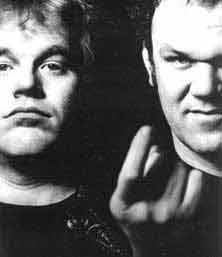After the success of Pineapple Express, I wanted to take a look back on the first David Gordon Green movie I saw, All the Real Girls. I actually got to meet Green and star Paul Schneider at a screening after I wrote this.
There has been a trend in several low-budget, independent films made within the past few years, focusing on the struggles of relationships between rustic people in small (often Southern) towns. Films in this pattern include The Good Girl, In the Bedroom, You Can Count on Me, and now, All the Real Girls.
David Gordon Green, who wrote the screenplay and directed, gives audiences a simple but stunning look at a small town in Appalachia. Paul (Paul Schneider) is a goofy but seemingly good-natured young man. His womanizing, however, has left him with a bad reputation. He hangs out with his buddies like Tip (Shea Whigham) and Bust-Ass (Danny McBride), drinking beer and talking about girls. Things change when Tip’s little sister Noel (Zooey Deschanel) returns home after graduating from an all-girls private school. Paul instantly becomes enamored with Noel, and Tip, knowing Paul’s ways with women, warns her not to fall in love.
Paul begins to let his guard down with Noel. He becomes more sympathetic with her and shows signs of maturation. Paul has slept with many different girls, and Noel is a virgin, but Paul does not push anything too fast. Just when the film seems like a lower-budgeted version of a sappy romantic comedy, Noel turns the tables on Paul. Now he must deal with the feelings of loss and heartbreak that he has caused so many girls.
Paul also has to deal with a depressing situation at home. His single mother, wonderfully portrayed by Patricia Clarkson, takes a job as a clown. Paul wants to help her, but he also wants to keep some of his individuality.
Paul eventually learns something about relationships, young love, and maturation. After his breakup with Noel, he begins to see how his past mistakes have hurt many people. Even Tip and several other characters go through a maturation process. These are simple people, but they can learn. In the end, it seems as though every character has learned something.
This is a solid film, supported by Green’s appropriate cinematic work. He captures the stale atmosphere of the town beautifully. He shows the monotony of the factory that holds the town together and the decaying neighborhoods on its riverbanks. In a memorable sequence, he juxtaposes drawings made by sick children with their actual facial responses to Paul and his mother dancing at the hospital. He includes enough comedy to keep things from being overdone, but for the most part, it is a serious and well-made drama.
The cast includes some unheralded actors, but performs well. The one film veteran, Clarkson, does a fantastic job. Deschanel, who was in The Good Girl (and makes the connection between these two films stronger), aptly portrays the naïve but unique love interest of Paul. Schneider, who helped come up with the story, handles the main role with a good amount of goofiness and seriousness. McBride, another newcomer, is a hilarious scene-stealer.
Green succeeds in his second feature film. Sometimes it seems a bit hokey, and a little overdramatic, but All the Real Girls holds up amazingly well for a film with its budget. This heartwarming and serious tale of young love is as strong as most independent films can hope to be.
